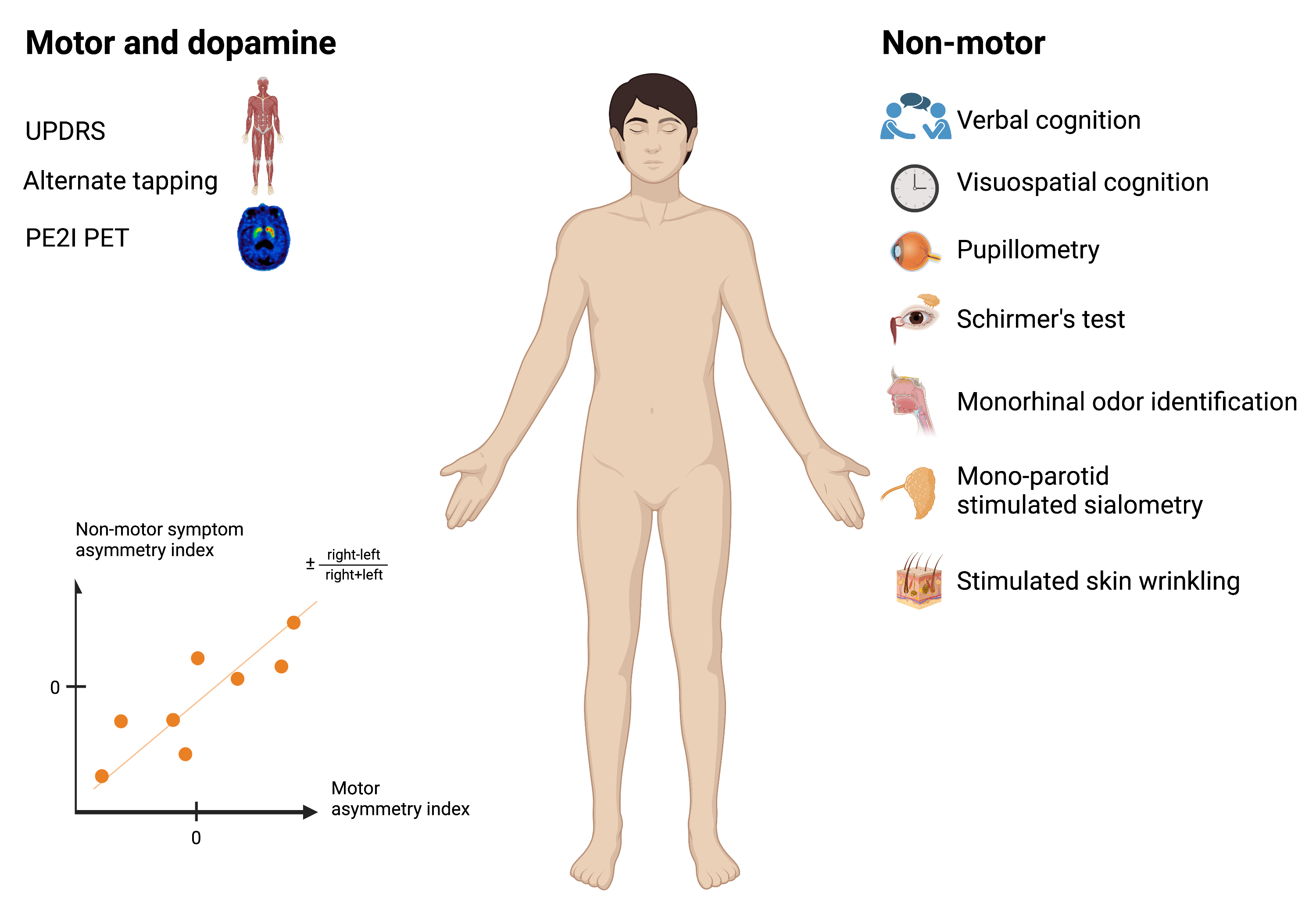Category: Parkinson's Disease: Non-Motor Symptoms
Objective: To identify, quantify and correlate asymmetry between motor and non-motor signs in early Parkinson’s disease (PD).
Background: Asymmetry of motor signs in PD reflects that nigrostriatal dopaminergic innervation in one hemisphere has degenerated more compared to the contralateral hemisphere. Thus, asymmetry in motor-signs may reflect an asymmetric distribution of pathology in the cerebral hemispheres. A similar relationship is likely true for lateralised non-motor signs, but these have received much less attention. This idea is supported by a recent study documenting that the more affected hemisphere display decreased striatal dopaminergic innervation concomitantly with decreased cortical cholinergic innervation. Studying laterality of signs from separate neuronal systems could represent a way to map the origin and spread of pathology within a hemisphere and between hemispheres. A recent hypothesis postulates that Lewy pathology arises in one hemisphere in some cases of PD. The pathology initially spreads more readily in the ipsilateral hemisphere because the cerebral hemisphere has more ipsilateral than contralateral connections. Thus, we hypothesize that laterality of motor-signs correlates with laterality of non-motor signs.
Method: Based on clinical PE2I-scans, we plan to recruit 20 PD with symmetrically decreased putamen activity, 20 PD with mostly right-sided decrease, 20 PD with mostly left-sided decrease, and 20 controls. Right and left sided motor and non-motor signs will be tested separately. Asymmetry will be computed using the asymmetry index, AI = (right – left)/(right + left). Non-motor tests will include Sniffin’ sticks as a measure of monorhinal olfaction, stimulated skin wrinkling for sympathetic peripheral integrity, pupillometry for autonomic innervation of the pupil, stimulated sialometry for parasympathetic innervation of the parotid gland, Schirmer’s test for lacrimation, and relevant tests of verbal and visuospatial cognition.
Results: 25 PD and 7 HC have been recruited to this date. We expect to present a full dataset for the conference.
Conclusion: Alignment of asymmetry in motor and non-motor signs in PD would imply that one hemisphere in general, and not just the dopamine system, is initially more affected by pathology than the contralateral hemisphere. This finding would support that Lewy pathology arises in one hemisphere in patients with brain-first PD.
To cite this abstract in AMA style:
F. Hansen, N. Okkels, P. Borghammer. Asymmetry of Motor and Non-motor Signs in Parkinson’s Disease: An Exploratory Clinical Case-control Study [abstract]. Mov Disord. 2022; 37 (suppl 2). https://www.mdsabstracts.org/abstract/asymmetry-of-motor-and-non-motor-signs-in-parkinsons-disease-an-exploratory-clinical-case-control-study/. Accessed December 22, 2025.« Back to 2022 International Congress
MDS Abstracts - https://www.mdsabstracts.org/abstract/asymmetry-of-motor-and-non-motor-signs-in-parkinsons-disease-an-exploratory-clinical-case-control-study/

